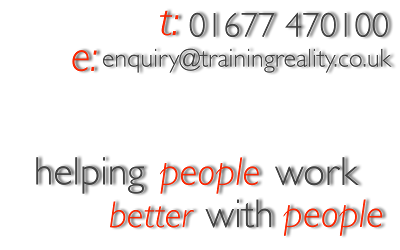Please press (at least!) one of these.
It costs you nothing, and (possibly) helps us spread the word!
NLP anchors and anchoring memories
Tuesday, 19 January 2010
In NLP, one of the most powerful concepts, which can become one of the most powerful techniques, is anchoring. In very simple terms, this is where a memory or feeling is mentally or physically associated with a certain "thing”, and that "thing” can bring those memories or feelings flooding back.
Obviously, there are some really positive aspects of this. A personal example for me is the song "The Air that I Breathe” by The Hollies. This, probably much to my parents’ chagrin, was played over and over and over again in the car on a particular family holiday in Cornwall when I was a child, and to this day I cannot hear it without visualising narrow, high-hedged country lanes (which is where we actually were), and speeding along them in a silver 1930’s racing BMW (which we were not, but we were in my head!).
Other anchors can have negative meanings. Certain songs or sounds, images or pictures, textures or tastes (and many other things) can bring flooding back things we would rather they didn’t.
A later article is going to look further into my view of anchors, but, as a taster for now, this is how I "see” them (any NLP’ers out there will be picking up on my visual language for sure by now…)
I see the anchoring concept as built of three parts – the anchor, the chain, and you. Mentally, for me, changing my reactions to things is about breaking an existing chain and replacing it with a new one – I tend to think that the anchor will always be there (I won’t ever remove ”The Air That I Breathe” from history!), but it is within my power to tweak, adjust or replace the chain that connects the anchor to me.
For now though, I want to offer a little thought into how to use anchors for memory purposes, and how other people can be helped with this.
A lot of presentation training covers how you might physically move on stage, how you might use space or different "zones”, how you might change your physical position or presence, and how you might use props, to anchor your message to your audience, and anchor a feeling, mood or attitude to different parts of that message. This can work phenomenally well, and can also be tricky to pull off slickly – a real case of practice makes perfect(ish). In a one-on-one coaching session though, it can be so very much simpler. Here’s what I’ve experienced recently…
Understand your client
As alluded to above, when I’m in a positive frame of mind, I have a tendency to be a "visually biased” person – that it, I see and recall images in my head – but with an added sprinkling of "inner voice” – the thing that is talking to me now about what I am writing, and what people might think about it when they read it!
Other people operate very differently. I was working with someone earlier this week, and when they were describing where they were at a particular time, they mentioned the soft carpet, the fact that their back felt cooler than their front, the hard, sharp edge of the cupboard next to them – not much visual in there, but a lot of feeling or kinaesthetic stuff.
These little insights can begin to give you clues about how the anchoring process might work for different people, and how best to help with memory tricks.
Use that understanding
With the understanding you’ve gained (acknowledging that this is still an assumption, and you might need to tweak or change it), you can help people with memory tricks – be it for remembering people’s names, key facts or numbers for a presentation, or whatever.
If you take their favoured mental processing system, simply get them to associate what they want to remember with something that ties to that process for them. It could be something physical – holding an unusual-feeling item; something visual – looking at a particular view or picture; something auditory – specific music in the background; essentially, whatever you (along with them) work out what works for them.
--
What you are doing here is finding out what type of anchor works for that person, and building a chain that ties a nice, solid anchor to the person, where the chain is made from links (facts, names, faces, etc etc) that the person really wants to have there.
Try it on yourself!
Please press (at least!) one of these.
It costs you nothing, and (possibly) helps us spread the word!





